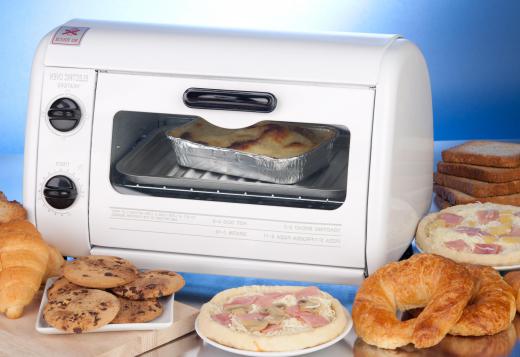A heater coil is a device used to heat water or air. Typically electric, the heater coil acts like a large resistor, and as the electric current flows through it, it begins to heat up. The resistance wire used in common household toasters is the same type of wire used in a heater coil. The amount of heat produced by the heater coil is controlled by a rheostat switch. Many appliances, such as hot water heaters, electric clothes dryers and electric ovens, all use some type of heater coil to produce heat.
There are several different types of heater coil designs used in appliances. Round wire with no coating is typically found in small electric space heaters, for example. Flat ribbon wire is usually found in toasters and toaster ovens. Electric ovens typically use ceramic-coated wires to protect the wires from dripping grease and food. Very small heating coils also are used inside hair dryers.

In appliances such as water heaters and ovens, the heating coils pass heat by radiating the heat into a specific area. A thermostat is set to a desired temperature, and the heater coil produces heat until the desired temperature is reached. The thermostat then shuts off the heat by stopping the flow of electricity to the coil. When the temperature drops, the thermostat once again allows the electricity to flow into the coil, and the temperature goes up.

Space heaters, clothes dryers and hair dryers use a forced-air design to transfer heat from the heating coils to the intended location. Using an electric fan, the appliance pushes air over and past a heater coil. As the coil heats up, the air flowing past it is warmed and forced out of the heating chamber. The warm air is then directed into the room, the clothes tumbler or the hair, where it gently heats or dries as intended. The level of heat in the air is controlled by the amount of electricity that is allowed to flow into the coils by a rheostat, which is typically labeled "high" and "low."
Most of these forced-air type appliances integrate a safety switch that turns off the heater coil in the event of a fan failure. With no flow of air to carry away the heat generated by the coils, the appliance could catch on fire. Items such as space heaters also use a mercury switch that turns off the appliance in the event of a tip-over.
